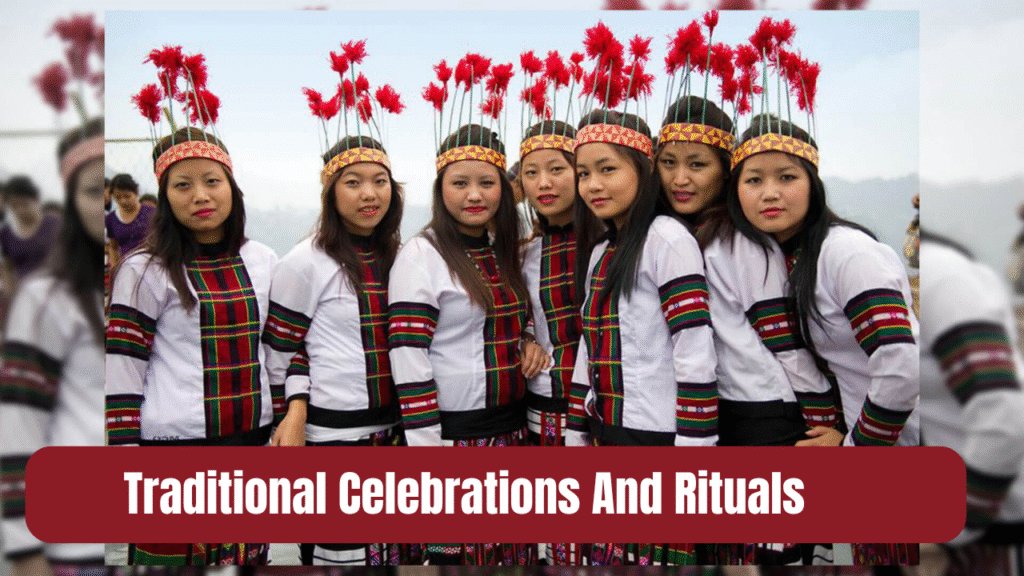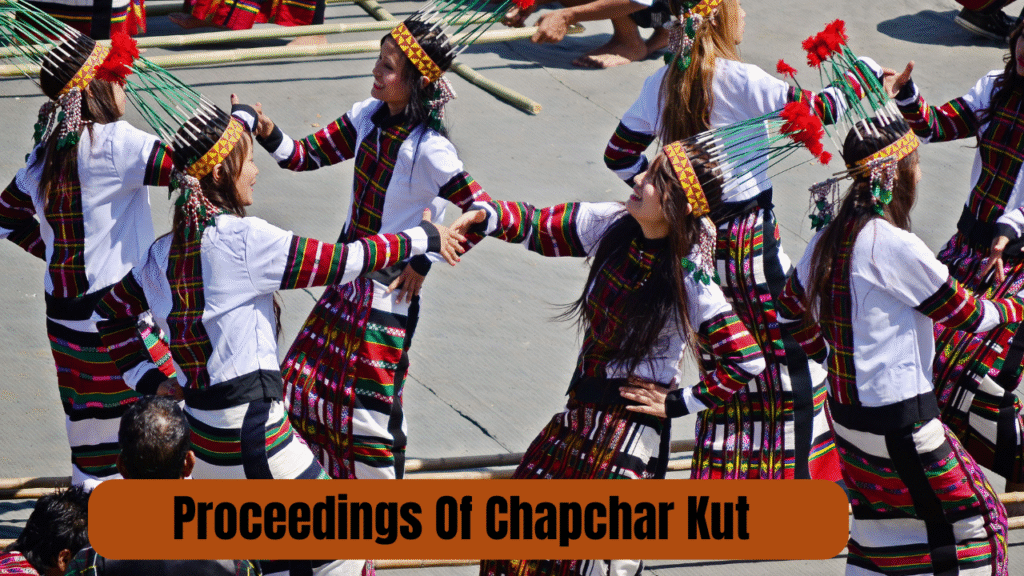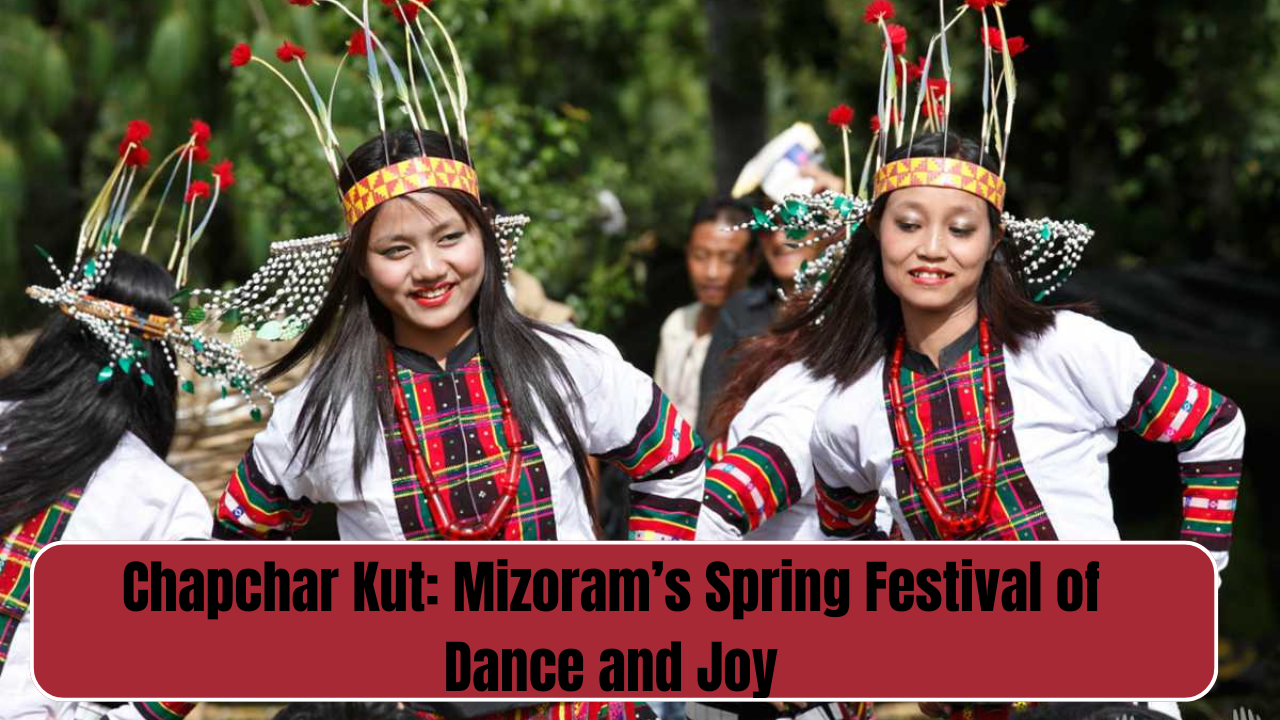Mizoram has for the longest time been in the limelight for being one of the most beautiful states characterised by varied customs and cultures; whereas the Mizo people have generally been agriculture based and so are more in touch with their living surroundings. This close relationship with nature is celebrated in Chapchar Kut, among many more festivals in the state, announcing the arrival of spring. The celebrations involve dances, music, and group activities of a joyous nature. An exciting avenue into Mizo culture adduced to be educational for the foreign gaze.
Etymology and Historical Significance
The term “Chapchar Kut” combines two Mizo words: chapchar, which refers to the time of the year when cut bamboos and trees are sun-dried, and kut, which means celebration. The origins of this festival trace back to the village of Suaipui, which is said to have existed somewhere between the years 1450 and 1600 AD. From what is passed from the oral traditions of the Mizo, the event probably started with hunters returning with very little from their expedition.

The chief of that village would, spontaneously, offer a feast with plenty of meat and rice beer to raise the morale of one and all. Thus, Chapchar Kut was mainly born as a spontaneous festival that turned disappointments into joy. Gradually, it has become a festival commemorated annually.
Traditionally, Chapchar Kut was celebrated in the narrow window between the onset of seasonal sowing and the clearing of forests for jhum cultivation. The community took a break during this time from working on their farms so as to celebrate, hunt and engage in recreational gatherings. It is treated, too, as a symbolic celebration of the transition from the stiff winter to warm spring a sign of hope and abundance.
Traditional Celebrations And Rituals
The artists performing ‘Cheraw Kanpui’ during the inauguration of the Chapchar KutPrem Singh Kanwar/Wikimedia Commons
The celebrations and rituals included in Chapchar Kut are largely colourful showcases representing various practices of the rich cultural heritage of the Mizos. For example, there are the famous bamboo and Cheraw Dances, a much awaited series of participative events in each edition of Chapchar Kut. In this dance, female dancers step back and forth between moving bamboo poles held in position by males. The spectators become entranced by this feat because of the rhythmic clapping of the poles and the synchronized stepping of the ladies.

Where Chapchar Kut dances are concerned, skipping the Chai Dance would be the greatest crime. The participants form a circle and join arms before swaying to traditional songs and beats. The dance harmonises the community.
Twelve-tinies do indeed observe Khua-allam; that is loosely translated as welcoming the guest-the dance performed in greeting the guests by traditional wear dancers with a vigorous show melding themselves on the beats of the drums and gongs. Chheihlam is one such dance-there’s the background and informal setting that include a hearth around which songs and dances are performed, stories told and constructed community bonding.
In itself, traditional feasts form part of the holy celebrations for Chapchar Kut. Indeed, these are just representation of the traditional foods chiseled from various meats and associated what it is for local ingredients at the festival. Long time ago charm-that alcohol flow-having rice beer (zu) as great beverages through festivities; modern timbers-a change with Christianity and dry laws from the state-are against drinking now.
Proceedings Of Chapchar Kut
In the ordinary course, another ceremonial killing occurs on a Sunday. The feast would take nearly four to five days for one pig. From then, it would be days and nights of singing, dancing, and drinking rice beer. While on the third night came to serve beer, young men dressed in full traditional attire and women danced in circles. On the fourth day, the families shared Zupui, a type of light rice beer, while the entertainment went on. On the fifth day, they celebrated by drinking the last of the beer, while the sixth day was spent just in rest-no work or hunting was allowed. Such a village is Chawngtui in which the celebration ends up running up to jhumming time, forcing villagers to leave back. Like-wise was the case with Ruallung-the Chai Dance would continue unbroken until a parrot dropped an ear of paddy on the grounds for harvest.

The arrival of the Christian faith in Mizoram in 1894 led to banning celebrations like Chapchar Kut and many others due to their association with drinking and animistic rites. The churches in Aizawl and Lunglei did not want their converts to trek back to former ways, and thus forbade participation. This created, however, controversy-the more educated the Mizos became, the more the world began to interfere with their business. People understood that their culture and religious practices coexisted. Today, it is celebrated in a sophisticated hue that lights up the old with the new, thereby ensuring that Chapchar Kut continues to shine as a gem within the heritage of Mizoram.
This is how Chapchar Kut is celebrated today In instilling a sense of heritage in the younger generation, Chapchar Kut now happens every year on the first Friday of March. Grand cultural performances including traditional dances, music, and attires are the highlights of the celebration. During the arts and crafts exhibition, the traditional artisans are demonstrating Mizo handlooms and local craft, while a spirit of competition is built within the community entertained through traditional sports and games. To make this celebration the epitome of Mizo cultural identity, the food stalls will include special Mizo dishes that will be served.
FAQs:
What is the significance of Chapchar Kut in Mizoram?
Chapchar Kut marks the end of jungle clearing before cultivation and celebrates nature, community spirit, and Mizo culture through dance, music, and vibrant traditional attire.
When is Chapchar Kut celebrated each year?
Chapchar Kut is typically celebrated in March, just after the completion of “jhum” (shifting cultivation) clearing, signaling the beginning of spring in Mizoram.
What are the main highlights of Chapchar Kut?
The festival features traditional dances like Cheraw (bamboo dance), folk songs, colorful costumes, and a grand cultural showcase reflecting Mizo heritage and festive joy.
